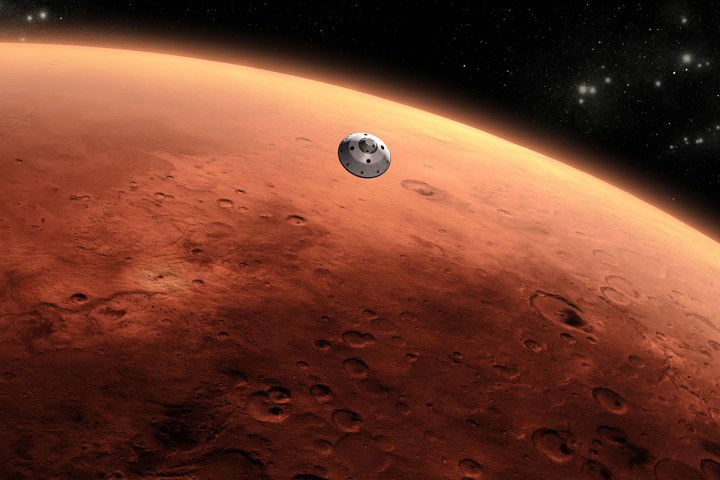
In a rare news conference, Xu Dazhe, the head of the China National Space Administration, has reiterated the country’s plan to land on Mars by 2020, according to the Associated Press. Originally announced in January of this year, Xu confirms that the project is proceeding with the government’s full support.
The Chinese mission will follow in the footsteps of the U.S. Viking 1, which landed on the red planet more than forty years ago. Xu announced that China will seek international collaborations and consider civilian applications of space technology for things like navigation, remote sensing, and communications.
This is China’s second significant space exploration announcement this week. On Thursday, the state-run Xinhua news agency announced China’s plans to launch a “core module” which will serve as the backbone of the country’s first space station, Tianhe-1. The country plans to construct Tianhe-1 (named after the Chinese word for galaxy) by 2018. With the International Space Station approaching retirement in 2024, Tianhe-1 may serve as the only operational space station.
It’s been thirteen years since China performed it’s first crewed mission, becoming the third nation to accomplish independent human spaceflight in 2003. But space exploration hasn’t always been a smooth venture for China. In 2013, the country’s celebrated Jade Rabbit rover landed on the moon before falling prey to technical troubles.
Mars has also been in the news a bit this week. Elon Musk shared his want to build a city on the planet. NASA solicited proposals for deep space habitats.
And NASA has set its sights on a manned mission to Mars in the 2030s, calling the red planet “a rich destination for scientific discovery and robotic and human exploration…” according to the agency’s website. It wouldn’t be fair to call this a race, but perhaps the ambitions of China and SpaceX will give new significance to NASA’s mission.


